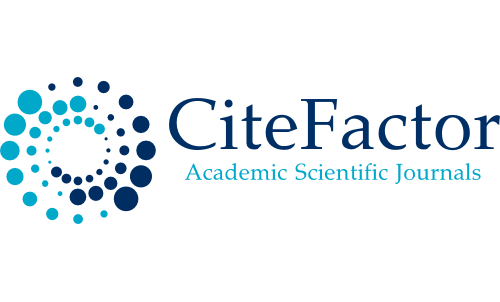Caracterização genética, clínica e epidemiológica de pacientes com Covid-19 em uma região do Sul do Brasil
DOI:
https://doi.org/10.17765/2176-9206.2022v15n4.e10740Palavras-chave:
COVID-19, SARS-CoV-2, Enzima conversora de angiotensina, Variação genética, ComorbidadeResumo
Caracterizar o perfil epidemiológico, clínico e genético de pacientes com Covid-19. Realizou-se um estudo observacional e transversal com voluntários que tiveram diagnóstico de Covid-19 no período de abril de 2020 a maio de 2021 no município de Santa Cruz do Sul (RS, Brasil), no qual foram coletados dados clínicos e epidemiológicos, além de amostras de sangue para a identificação de polimorfismos no gene ACE2. Foram recrutados 87 indivíduos e destes, 16,7% necessitaram de internação hospitalar, sendo a maioria do sexo masculino. A obesidade foi a comorbidade mais frequente, no entanto, doenças cardiovasculares, hipertensão e diabetes apresentaram maior significância quando associadas às internações. Em relação à características genéticas, entre os voluntários não foram encontrados polimorfismos no gene ACE2. A pesquisa sugere que o sexo masculino e presença de comorbidades são importantes fatores de risco para a severidade da Covid-19.Downloads
Referências
1. COVID-19 Map - Johns Hopkins Coronavirus Resource Center [Internet]. [cited on March 2022]. available at : https://coronavirus.jhu.edu/map.html.
2. Hoffmann M, Kleine-Weber H, Schroeder S, Krüger N, Herrler T, Erichsen S, et al. SARS-CoV-2 Cell Entry Depends on ACE2 and TMPRSS2 and Is Blocked by a Clinically Proven Protease Inhibitor. Cell. 16 April 2020;181(2):271-280.e8. 10.1016/j.cell.2020.02.052
3. Teng S, Tang Q. ACE2 enhance viral infection or viral infection aggravate the underlying diseases. Comput Struct Biotechnol J. 6 August 2020;18:2100–6. 10.1016/j.csbj.2020.08.002
4. Zhang H, Wada J, Hida K, Tsuchiyama Y, Hiragushi K, Shikata K, et al. Collectrin, a collecting duct-specific transmembrane glycoprotein, is a novel homolog of ACE2 and is developmentally regulated in embryonic kidneys. J Biol Chem. 18 May 2001;276(20):17132–9. 10.1074/jbc.M006723200
5. Fan Z, Wu G, Yue M, Ye J, Chen Y, Xu B, et al. Hypertension and hypertensive left ventricular hypertrophy are associated with ACE2 genetic polymorphism. Life Sci. 15 May 2019;225:39–45. 10.1016/j.lfs.2019.03.059
6. Luo Y, Liu C, Guan T, Li Y, Lai Y, Li F, et al. Association of ACE2 genetic polymorphisms with hypertension-related target organ damages in south Xinjiang. Hypertens Res. May 2019;42(5):681–9. 10.1038/s41440-018-0166-6
7. Hussain M, Jabeen N, Raza F, Shabbir S, Baig AA, Amanullah A, et al. Structural variations in human ACE2 may influence its binding with SARS-CoV-2 spike protein. J Med Virol. September 2020;92(9):1580–6. 10.1002/jmv.25832
8. Cao Y, Li L, Feng Z, Wan S, Huang P, Sun X, et al. Comparative genetic analysis of the novel coronavirus (2019-nCoV/SARS-CoV-2) receptor ACE2 in different populations. Cell Discov. 24 February 2020;6(1):1–4. 10.1038/s41421-020-0147-1
9. Stawiski EW, Diwanji D, Suryamohan K, Gupta R, Fellouse FA, Sathirapongsasuti F, et al. Human ACE2 receptor polymorphisms predict SARS-CoV-2 susceptibility. 2020 [citado 25 de outubro de 2021]; Available at https://biorxiv.org/cgi/content/short/2020.04.07.024752
10. Miller SA, Dykes DD, Polesky HF. A simple salting out procedure for extracting DNA from human nucleated cells. Nucleic Acids Res. 11 February 1988;16(3):1215. 10.1093/nar/16.3.1215
11. Wray S, Arrowsmith S. The Physiological Mechanisms of the Sex-Based Difference in Outcomes of COVID19 Infection. Front Physiol. 2021;12:627260. 10.3389/fphys.2021.627260
12. Özçelik Korkmaz M, Eğilmez OK, Özçelik MA, Güven M. Otolaryngological manifestations of hospitalised patients with confirmed COVID-19 infection. Eur Arch Otorhinolaryngol. 3 October 2020;1–11. 10.1007/s00405-020-06396-8
13. Fodoulian L, Tuberosa J, Rossier D, Boillat M, Kan C, Pauli V, et al. SARS-CoV-2 Receptors and Entry Genes Are Expressed in the Human Olfactory Neuroepithelium and Brain. iScience. December 2020;23(12):101839. 10.1016/j.isci.2020.101839
14. Ngo ST, Steyn FJ, McCombe PA. Gender differences in autoimmune disease. Front Neuroendocrinol. August 2014;35(3):347–69. 10.1016/j.yfrne.2014.04.004
15. Hopkinson NS, Rossi N, El-Sayed_Moustafa J, Laverty AA, Quint JK, Freidin M, et al. Current smoking and COVID-19 risk: results from a population symptom app in over 2.4 million people. Thorax. January 2021;thoraxjnl-2020-216422. 10.1136/thoraxjnl-2020-216422
16. Amorim CF, Góes FSR, Lima FLO, Gomes LNL, Almeida FC, Almeida PC, et al. Grupo ABO e a suscetibilidade a infecção por SARS-CoV-2: uma revisão de literatura. Hematol Transfus Cell Ther. November 2020;42:536. 10.1016/j.htct.2020.10.905
17. Mauvais-Jarvis F, Merz NB, Barnes PJ, Brinton RD, Carrero J-J, DeMeo DL, et al. Sex and gender: modifiers of health, disease, and medicine. The Lancet. 22 August 2020;396(10250):565–82. 10.1016/S0140-6736(20)31561-0
18. Yang J, Zheng Y, Gou X, Pu K, Chen Z, Guo Q, et al. Prevalence of comorbidities and its effects in patients infected with SARS-CoV-2: a systematic review and meta-analysis. Int J Infect Dis IJID Off Publ Int Soc Infect Dis. May 2020;94:91–5. 10.1016/j.ijid.2020.03.017
19. Wang Z, Deng H, Ou C, Liang J, Wang Y, Jiang M, et al. Clinical symptoms, comorbidities and complications in severe and non-severe patients with COVID-19: A systematic review and meta-analysis without cases duplication. Medicine (Baltimore). 25 November 2020;99(48):e23327. 10.1097/MD.0000000000023327
20. DGTI S-. SES-RS - Coronavirus [Internet]. [cited on 14 March 2022]. Available at: https://ti.saude.rs.gov.br/covid19/
21. Zhou F, Yu T, Du R, Fan G, Liu Y, Liu Z, et al. Clinical course and risk factors for mortality of adult inpatients with COVID-19 in Wuhan, China: a retrospective cohort study. The Lancet. 28 March 2020;395(10229):1054–62. 10.1016/S0140-6736(20)30566-3
22. Zhao Y, Zhao Z, Wang Y, Zhou Y, Ma Y, Zuo W. Single-cell RNA expression profiling of ACE2, the putative receptor of Wuhan 2019-nCov. 2020 [cited on 25 October 2021]; Available at: https://biorxiv.org/cgi/content/short/2020.01.26.919985
23. Coto E, Avanzas P, Gómez J. The Renin–Angiotensin–Aldosterone System and Coronavirus Disease 2019. Eur Cardiol Rev. 9 March 2021;16:e07. 10.6061/clinics/2021/e2342
24. Pinto BGG, Oliveira AER, Singh Y, Jimenez L, Gonçalves ANA, Ogava RLT, et al. ACE2 Expression Is Increased in the Lungs of Patients With Comorbidities Associated With Severe COVID-19. J Infect Dis. 23 July 2020;222(4):556–63. 10.1093/infdis/jiaa332
25. Benetti E, Tita R, Spiga O, Ciolfi A, Birolo G, Bruselles A, et al. ACE2 gene variants may underlie interindividual variability and susceptibility to COVID-19 in the Italian population. Eur J Hum Genet. November 2020;28(11):1602–14. 10.1038/s41431-020-0691-z.
26. Calcagnile M, Forgez P, Iannelli A, Bucci C, Alifano M, Alifano P. ACE2 polymorphisms and individual susceptibility to SARS-CoV-2 infection: insights from an in silico study. 2020 [cited on 13 November 2021]; available at: https://biorxiv.org/cgi/content/short/2020.04.23.057042
27. Othman H, Bouslama Z, Brandenburg J-T, da Rocha J, Hamdi Y, Ghedira K, et al. Interaction of the spike protein RBD from SARS-CoV-2 with ACE2: Similarity with SARS-CoV, hot-spot analysis and effect of the receptor polymorphism. Biochem Biophys Res Commun. 2020;702–8. 10.1016/j.bbrc.2020.05.028
28. Li Q, Cao Z, Rahman P. Genetic variability of human angiotensin‐converting enzyme 2 (hACE2) among various ethnic populations. Mol Genet Genomic Med [Internet]. August 2020 [cited on 10 February 2022];8(8). available at : https://www.ncbi.nlm.nih.gov/labs/pmc/articles/PMC7323111/
29. Darbani B. The Expression and Polymorphism of Entry Machinery for COVID-19 in Human: Juxtaposing Population Groups, Gender, and Different Tissues. Int J Environ Res Public Health [Internet]. May 2020 [cited on 10 February 2022];17(10). available at https://www.ncbi.nlm.nih.gov/labs/pmc/articles/PMC7277542/
30. Van Den Broucke S. Why health promotion matters to the COVID-19 pandemic, and vice versa. Health Promot Int [Internet]. April 2020; 35(2):181-186.10.1093/heapro/daaa042
Downloads
Publicado
Como Citar
Edição
Seção
Licença
A submissão de originais para a revista Saúde e Pesquisa implica na transferência da Carta Concessão de Direitos Autorais, pelos autores, dos direitos de publicação digital para a revista após serem informados do aceite de publicação.A Secretaria Editorial irá fornecer da um modelo de Carta de Concessão de Direitos Autorais, indicando o cumprimento integral de princípios éticos e legislação específica. Os direitos autorais dos artigos publicados nesta revista são de direito do autor, com direitos da revista sobre a primeira publicação. Os autores somente poderão utilizar os mesmos resultados em outras publicações, indicando claramente a revista Saúde e Pesquisa como o meio da publicação original. Em virtude de tratar-se de um periódico de acesso aberto, é permitido o uso gratuito dos artigos, principalmente em aplicações educacionais e científicas, desde que citada a fonte. A Saúde e Pesquisa adota a licença Creative Commons Attribution 4.0 International.
A revista se reserva o direito de efetuar, nos originais, alterações de ordem normativa, ortográfica e gramatical, com vistas a manter o padrão culto da língua e a credibilidade do veículo. Respeitará, no entanto, o estilo de escrever dos autores. Alterações, correções ou sugestões de ordem conceitual serão encaminhadas aos autores, quando necessário. Nesses casos, os artigos, depois de adequados, deverão ser submetidos a nova apreciação. As opiniões emitidas pelos autores dos artigos são de sua exclusiva responsabilidade.


















